Room 237

Reviews
Gareth Senior
An intruiging documentary. If you've loved & watched "The Shining" many, many times, this doc will still show you things you never noticed before. The premise is that different theories about The Shining are examined. All of them start with an idea triggered by a single shot, but most fall apart as the originator attempts to expand and prove their theory. In the end, most of the theorists reveal themselves to be hilariously lost in the film and their reading of it. Stanley Kubrick always stated that he wanted the film to have an unsettling affect on the viewer. This documentary proves that he succeeded. In the end "Room 237" is a piece that celebrates Kubrick's directorial brilliance and is a loving analysis of one of his best films.
LastCaress1972
"At the end of The Shining, he's reduced to a screaming ape, just like in the beginning of 2001 there are screaming apes." - John Fell Ryan Astonishingly, the above statement, as bizarre, irrelevant and as bereft of any further analysis as it is (and I haven't taken it out of context; there really IS no further analysis or conclusion mined from that sentence), is possibly the sanest, most rational sentence uttered in Room 237, a documentary film by Rodney Asher lending a platform to some of the whackier interpretations of Stanley Kubrick's terrifying but relatively straightforward adaptation of Stephen King's classic novel, The Shining. Essentially: The visuals of Room 237 are made up mostly of excerpts from The Shining (but also from other movies, mostly from Stanley Kubrick's or Jack Nicholson's catalogues), either slowed down, sped up, repeated, screen-split, run backwards, overlayed upon itself or augmented with arrows, directional bars or other highlighting/orientation tools in order to assist the points being made at the time on the audio by any one of five contributors, all of whom appear via voiceover only. Bill Blakemore - a hugely-respected news reporter - is first off of the high board with his assertion that the movie is allegorical of the white man's slaughter of the Native Americans. Because of the hoary old trope that The Overlook of the movie was built on an old Indian burial ground, you see. And that there are pictures of Native Americans or examples of Native American art and culture all over the hotel. The concept that the hotel happens to have a Native American theme, hence the paraphernalia, seems to have passed him by. What HASN'T passed him by is the tin of baking powder in the dry goods storeroom illustrating an American Indian Chief, the appearance of which signifies a "good" thing or a "bad" thing depending on how front-facing the label is in any given scene, or the fact that the elevator doors are shut when the blood pours out of the lift shaft, which is a clear allegory to how white men can't/won't "open up" (Eh? Eh? See what he's done there? Eh?) to the slaughter of the tribes. That axe? Why, that was the axe that the Europeans used to cut a swathe through the Americas, of course! Mind you, our next man up - Geoffrey Cocks, an author specializing in Nazi Germany and of cinematic allegory to the Holocaust; have a guess where HE'S going with his theories - sees the axe scene, in conjunction with Nicholson's line "Little pigs, little pigs, let me come in. [Silence and a pause] Not by the hair of your chiny-chin-chins? Then I'll huff, and I'll puff, and I'll blow your house in" as a clear nod not simply to the well-known fairy tale, no, but to Disney's racially unsound 1933 short "The Three Little Pigs" and the wolf's "Jew" disguise at the pig's door. He adds to his broth Jack Torrance's typewriter (German manufacturer) and frequent uses of the number 42 throughout the movie (2x3x7=42, Danny wears a shirt emblazoned with the number 42, etc.). "When you put a German typewriter with the number 42," states Cocks, "You get The Holocaust." Germany, 1942, you see. Okay. Juli Kearns and the aforementioned John Fell Ryan - he of the tenuous "ape" comparison above - had the more vague theories: Kearns seemed obsessed with mapping out The Overlook, which only really served to highlight some errors in continuity which were no doubt committed for the sake of the shot Stanley wanted, and not factoring in some madwoman dissecting the film frame-by-frame thirty years later. She also had some half-cocked theories on symmetry, and minotaurs. Fell Ryan didn't appear to even have as much as Kearns - he was mainly presenting an absolutely bonkers theory on behalf of another oddball who declined to be in the film; something about how the film needs to be watched both forwards AND backwards at once, with the "backwards" version overlayed on top of the regular film. But besides highlighting a few similarities in other Kubrick films (at a bloody stretch) and saying that "it's interesting" quite a lot, his ideas didn't seem to really go anywhere. Perversely, this lack of true mentalism inadvertandtly made him the most sensible fellow in the picture. Best of the lot though is Jay Weidner (described on his own website as "an authority on the hermetic and alchemical traditions"). The Shining is to him no less than an implicit confession by Stanley Kubrick, that he staged the moon landings on behalf of NASA. 237 - the titular room number, changed in the movie from 217 in the book - was the number of the soundstage on which the landings were recorded, of course. It's also 237,000 miles to the moon as well, apparently. The speech by Jack to Wendy, on the stairs ("Have you ever had a single moment's thought about my responsibilities? Have you ever thought for a single solitary moment about my responsibilities to my employers?!" etc.) was Kubrick talking to his wife, about his NASA gig. The barely-seen Summer caretaker Bill Watson (in a couple of scenes near the very beginning)? He's a representation of the CIA, keeping silent tabs on the President, represented by Ullman the manager in his unconvincing wig (of course, to Bill Blakemore, Watson is the manifestation of the Native American cowed into submission by the white man. Pick your poison, everybody! We've got all flavours!). Haven't these people considered that maybe they've just pulled the film so finely to pieces that they've seen behind the curtain, and found every continuity error in the movie? Well, no. Fanning the nutty flames alongside their utter adoration of Kubrick's filmmaking is the perception Kubrick had garnered for himself as someone who did not make mistakes, ever. So, to these people, there ARE no continuity errors or filmic shortcuts; if they've seen it, Stanley MEANT for them to see it. Because of the secret message he was conveying. That chair that was in shot and now isn't, well that's because of [INSERT LOONY THEORY HERE]. Definitely not an honest-to-goodness gaffe, oh no. So, is the film any good? Oh, it's entertaining, certainly, in a "WTF?!?" way. It's utter bunkum of course from start to finish, but the filmmaker knows that. He doesn't seem in it to poke fun though (his accompanying visuals almost uniformly assist the theories, only dipping into sly, gently humourous subversion occasionally), he just clearly loves to hear an extreme take on familiar source material. We all love a good conspiracy, don't we? And some of us love an absolutely hair-brained one, too. 8/10, recommended for anyone who enjoyed Trekkies, or Superheroes. Or anyone who loves a twisted tale from the grassy knoll. Oh, and for people who love The Shining, too.
j0ng
This is a pretentious film with assertions that are way out in left field. The reason I gave it this score is my love for the original movie itself.
Movie Recommendation
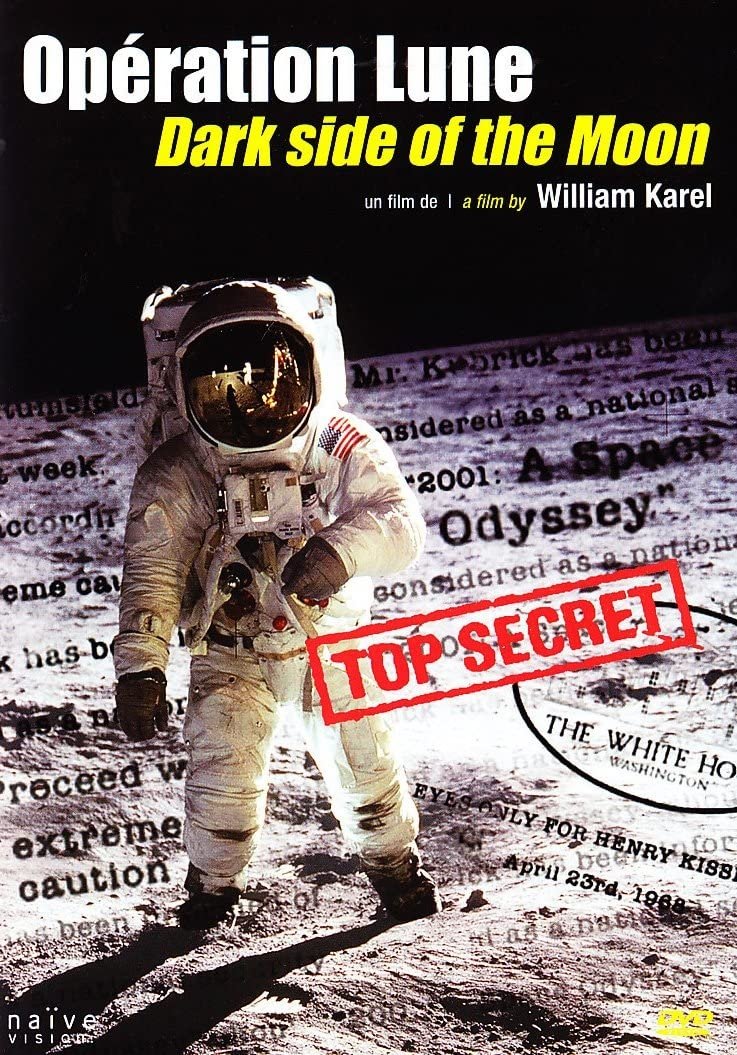 Dark Side of the Moon2002-10-16A French documentary or, one might say more accurately, a mockumentary, by director William Karel which originally aired on Arte in 2002 with the title Opération Lune. The basic premise for the film is the theory that the television footage from the Apollo 11 Moon landing was faked and actually recorded in a studio by the CIA with help from director Stanley Kubrick.More...
Dark Side of the Moon2002-10-16A French documentary or, one might say more accurately, a mockumentary, by director William Karel which originally aired on Arte in 2002 with the title Opération Lune. The basic premise for the film is the theory that the television footage from the Apollo 11 Moon landing was faked and actually recorded in a studio by the CIA with help from director Stanley Kubrick.More...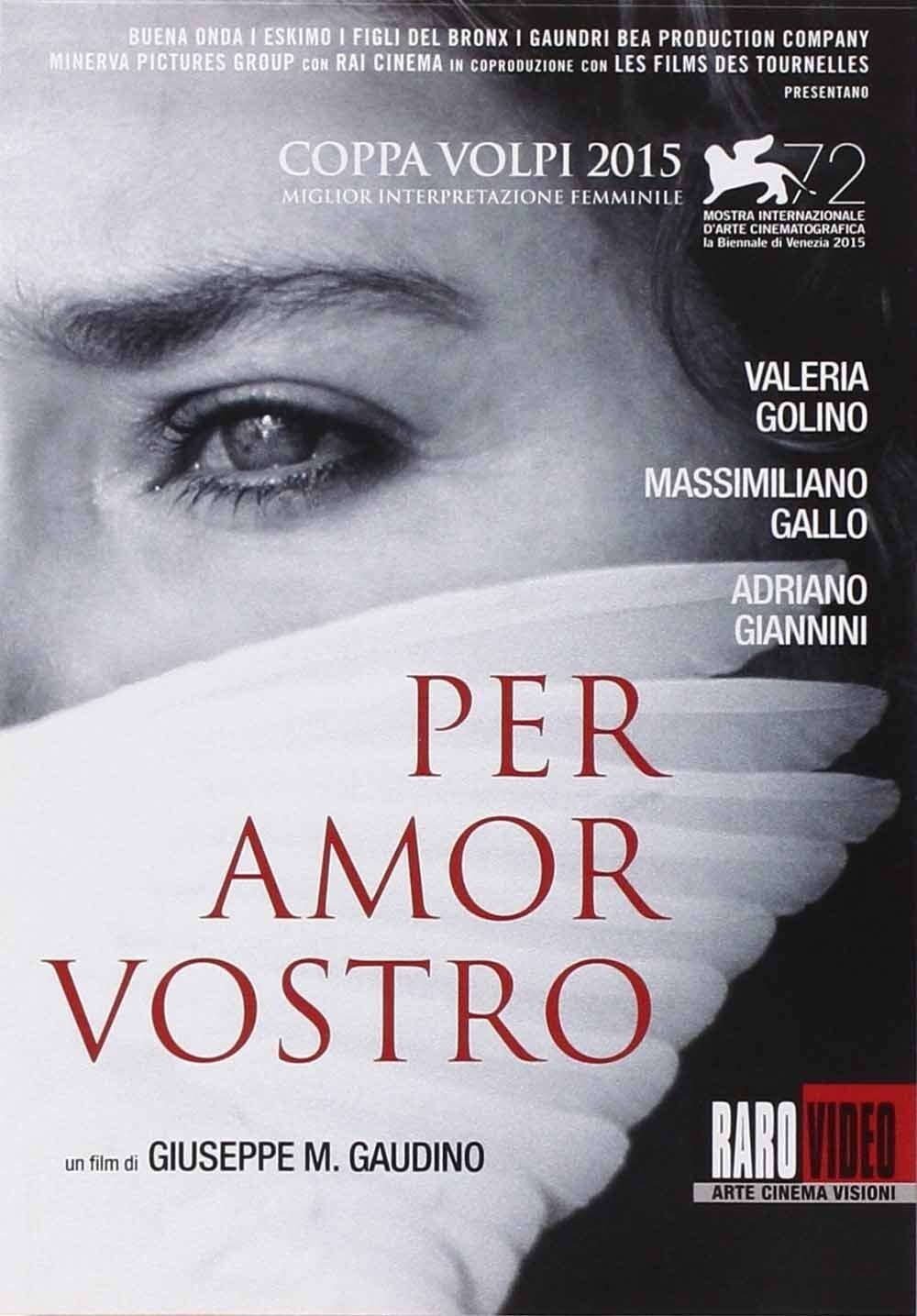 For Your Love2015-09-03An extremely mannered and increasingly preposterous tale of a fortysomething woman who has to deal with an abusive, double-dealing husband and a handsome, soap-actor lover who seems to be too good to be true.More...
For Your Love2015-09-03An extremely mannered and increasingly preposterous tale of a fortysomething woman who has to deal with an abusive, double-dealing husband and a handsome, soap-actor lover who seems to be too good to be true.More... Nightmares in Red, White and Blue2009-08-06An exploration of the appeal of horror films, with interviews of many legendary directors in the genre.More...
Nightmares in Red, White and Blue2009-08-06An exploration of the appeal of horror films, with interviews of many legendary directors in the genre.More...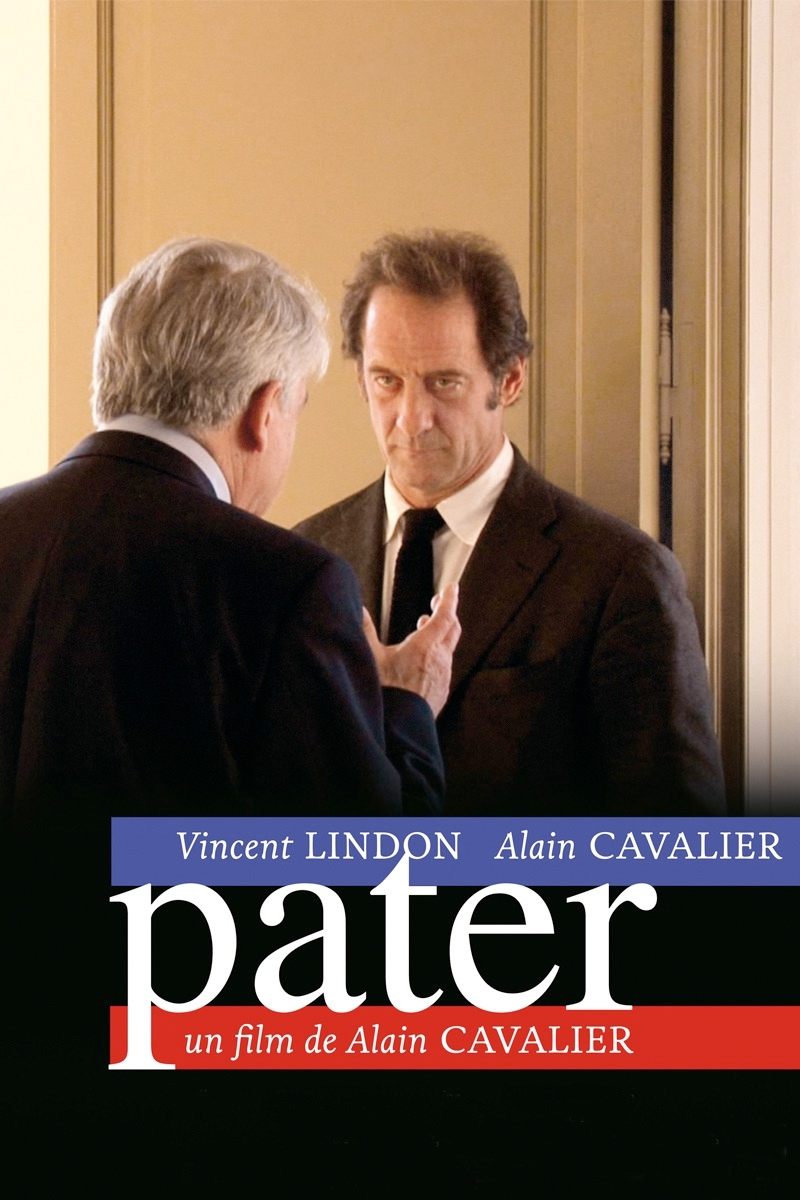 Pater2011-06-22During a year, they would meet and film each other. The filmmaker and the actor, the President and his prime minister, Alain Cavalier and Vincent Lindon. In Pater, you will see them in real life and in the fiction that they invented together.More...
Pater2011-06-22During a year, they would meet and film each other. The filmmaker and the actor, the President and his prime minister, Alain Cavalier and Vincent Lindon. In Pater, you will see them in real life and in the fiction that they invented together.More...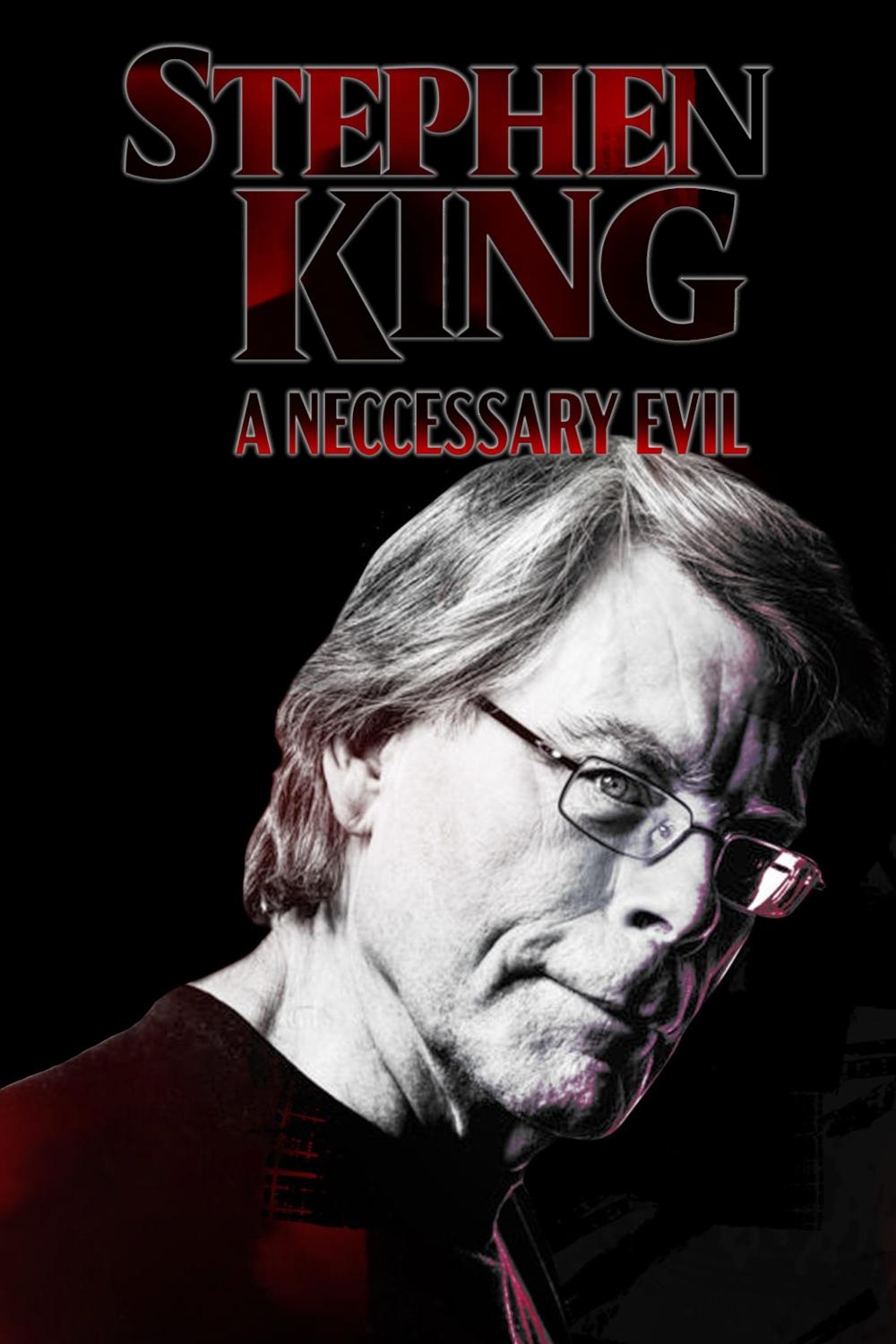 Stephen King: A Necessary Evil2020-10-16The American writer Stephen King has been one of the world's best-selling authors for decades. How can the overwhelming success of his numerous works be explained? Perhaps by the boundless inventiveness of his literature? And what else is behind the longevity of his astonishing career?More...
Stephen King: A Necessary Evil2020-10-16The American writer Stephen King has been one of the world's best-selling authors for decades. How can the overwhelming success of his numerous works be explained? Perhaps by the boundless inventiveness of his literature? And what else is behind the longevity of his astonishing career?More... What Ever Happened to Aunt Alice?1969-08-20An aging widow hides a deadly secret which she will do anything to keep buried.More...
What Ever Happened to Aunt Alice?1969-08-20An aging widow hides a deadly secret which she will do anything to keep buried.More...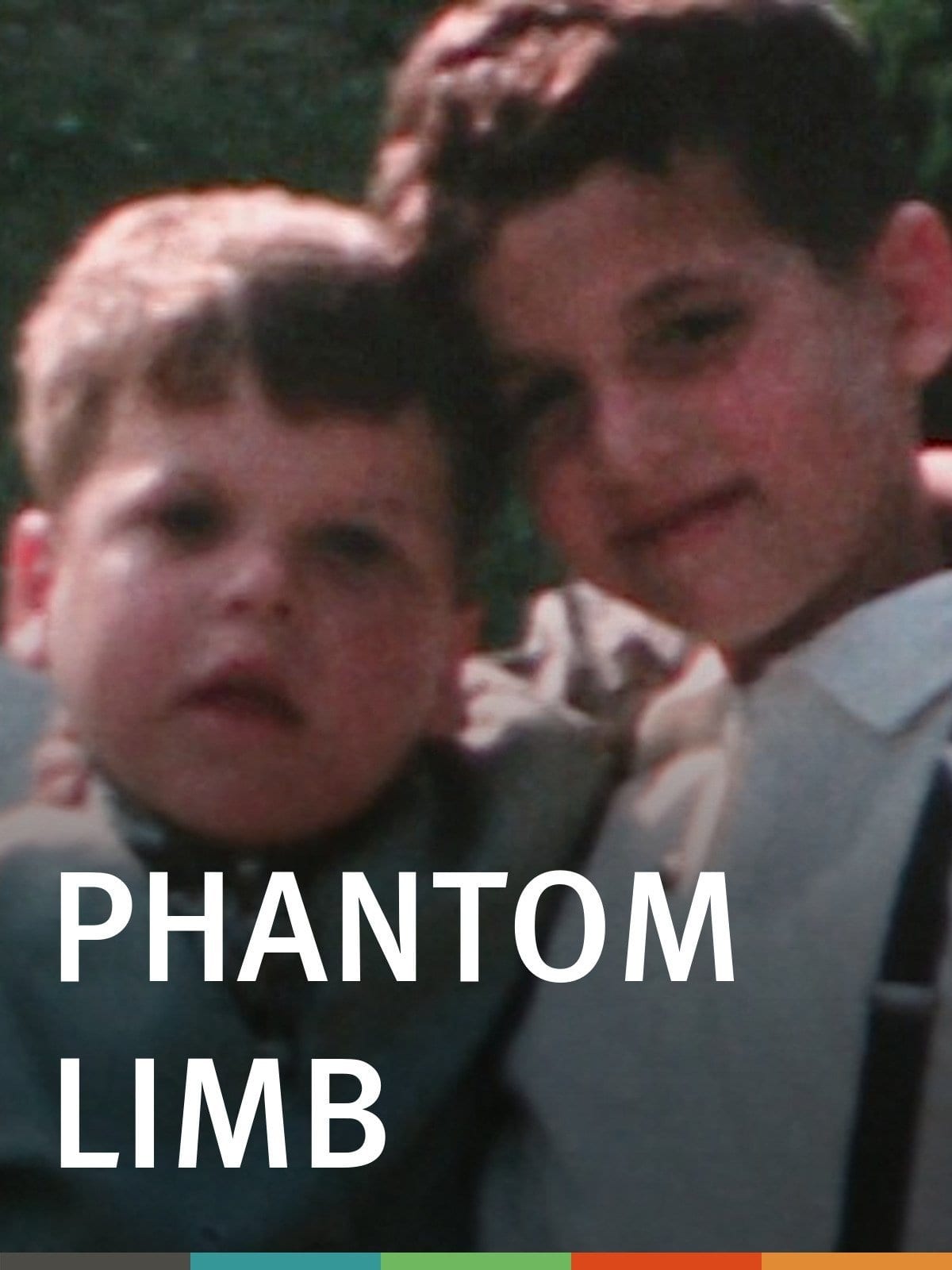 Phantom Limb2005-04-21The death of my seven-year-old brother when I was nine remains a painful and haunting memory. My parents did not know how to cope with the loss of their child and the entire family experienced indescribable pain. Phantom Limb uses this personal story as a point of departure. Whether it is a loss through death or divorce, the stages of grieving are the same. Individuals often go through denial, anger, bargaining, depression and, ultimately, some kind of acceptance, in order to heal. The film is loosely structured according to these stages. Interspersed throughout this poetic documentary are interviews with a cemetery owner, a phantom limb patient and an author of a book about evidence for life after death. Phantom Limb reminds viewers that while grief is painful and isolating, it is a reminder to each of us that life is impermanent. - Jay RosenblattMore...
Phantom Limb2005-04-21The death of my seven-year-old brother when I was nine remains a painful and haunting memory. My parents did not know how to cope with the loss of their child and the entire family experienced indescribable pain. Phantom Limb uses this personal story as a point of departure. Whether it is a loss through death or divorce, the stages of grieving are the same. Individuals often go through denial, anger, bargaining, depression and, ultimately, some kind of acceptance, in order to heal. The film is loosely structured according to these stages. Interspersed throughout this poetic documentary are interviews with a cemetery owner, a phantom limb patient and an author of a book about evidence for life after death. Phantom Limb reminds viewers that while grief is painful and isolating, it is a reminder to each of us that life is impermanent. - Jay RosenblattMore... Resurrect Dead: The Mystery of the Toynbee Tiles2011-08-01An urban mystery unfurls as one man pieces together the surreal meaning of hundreds of cryptic tiled messages that have been appearing in city streets across the U.S. and South America.More...
Resurrect Dead: The Mystery of the Toynbee Tiles2011-08-01An urban mystery unfurls as one man pieces together the surreal meaning of hundreds of cryptic tiled messages that have been appearing in city streets across the U.S. and South America.More...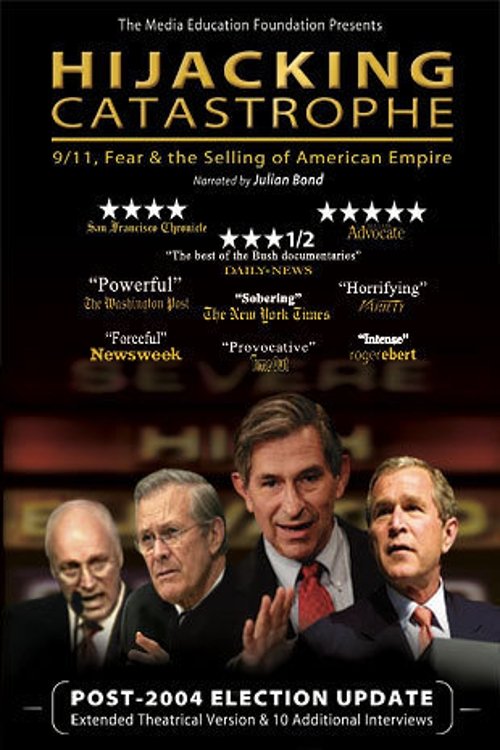 Hijacking Catastrophe: 9/11, Fear & the Selling of American Empire2004-09-10This documentary places the Bush Administration's original justifications for war in Iraq within the larger context of a two-decade struggle by neo-conservatives to dramatically increase military spending while projecting American power and influence globally by means of force.More...
Hijacking Catastrophe: 9/11, Fear & the Selling of American Empire2004-09-10This documentary places the Bush Administration's original justifications for war in Iraq within the larger context of a two-decade struggle by neo-conservatives to dramatically increase military spending while projecting American power and influence globally by means of force.More... Martin Margiela: In His Own Words2020-09-30In 2008, after a show celebrating the 20th anniversary of his fashion house, Maison Margiela, visionary designer Martin Margiela left the fashion world for good. Throughout his career, the Belgian designer remained anonymous, refusing interviews and never being photographed, leading some to call him the fashion world’s answer to Banksy. Now, more than a decade after his departure, Margiela digs into his meticulous and idiosyncratic personal archives to reflect on his revolutionary career and legacy.More...
Martin Margiela: In His Own Words2020-09-30In 2008, after a show celebrating the 20th anniversary of his fashion house, Maison Margiela, visionary designer Martin Margiela left the fashion world for good. Throughout his career, the Belgian designer remained anonymous, refusing interviews and never being photographed, leading some to call him the fashion world’s answer to Banksy. Now, more than a decade after his departure, Margiela digs into his meticulous and idiosyncratic personal archives to reflect on his revolutionary career and legacy.More...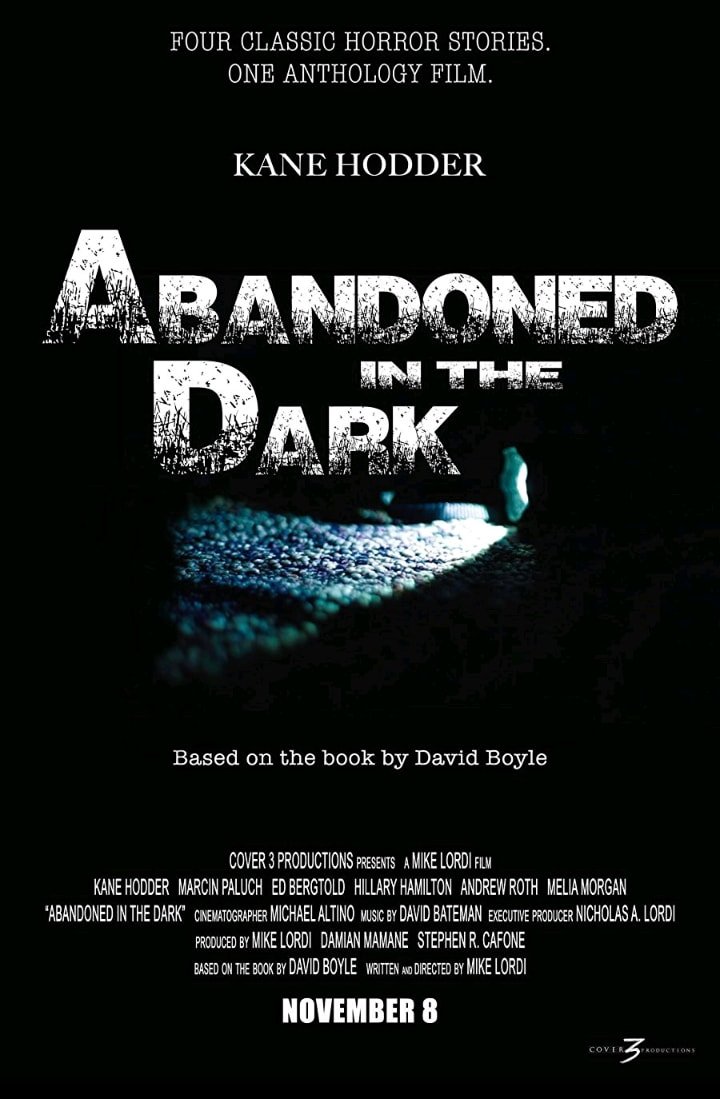 Abandoned in the Dark2014-11-08Kane Hodder stars in "Abandoned in the Dark", an anthology film comprised of 4 short horror, suspense stories seamlessly connected to one another through extreme tension and gripping real life conflict. Intriguing characters find themselves in life or death situations and forced to confront their own worst fearsMore...
Abandoned in the Dark2014-11-08Kane Hodder stars in "Abandoned in the Dark", an anthology film comprised of 4 short horror, suspense stories seamlessly connected to one another through extreme tension and gripping real life conflict. Intriguing characters find themselves in life or death situations and forced to confront their own worst fearsMore...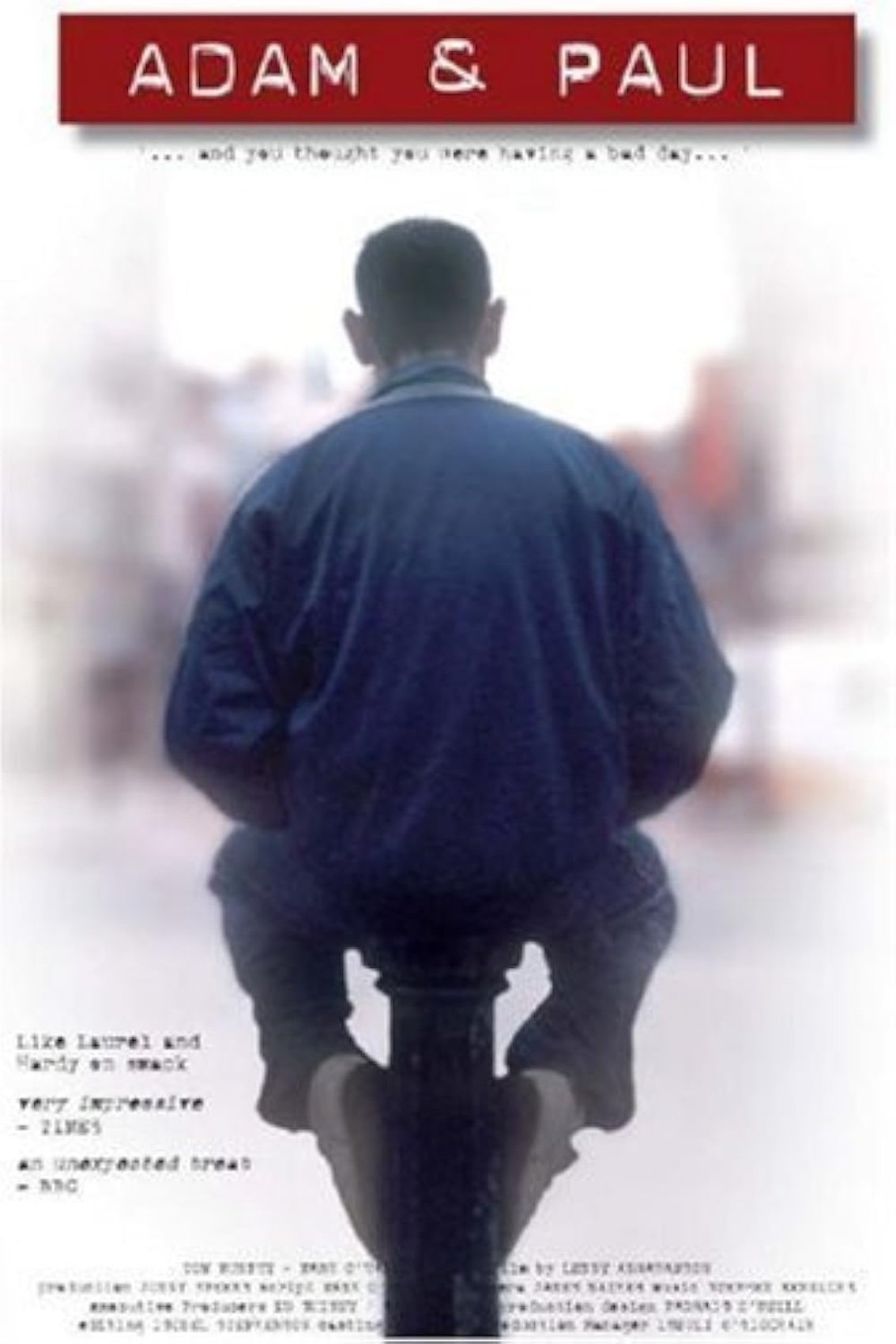 Adam & Paul2004-08-27Adam and Paul are two young junkies living in Dublin and perpetually on the lookout for their next fix. During their search, they encounter various unsavoury characters and make some futile attempts at petty theft. As their day progresses, Adam and Paul get into a good share of trouble as they do whatever they can to score heroin, eventually running afoul of an imposing thug—who only drags them into more shady activities.More...
Adam & Paul2004-08-27Adam and Paul are two young junkies living in Dublin and perpetually on the lookout for their next fix. During their search, they encounter various unsavoury characters and make some futile attempts at petty theft. As their day progresses, Adam and Paul get into a good share of trouble as they do whatever they can to score heroin, eventually running afoul of an imposing thug—who only drags them into more shady activities.More...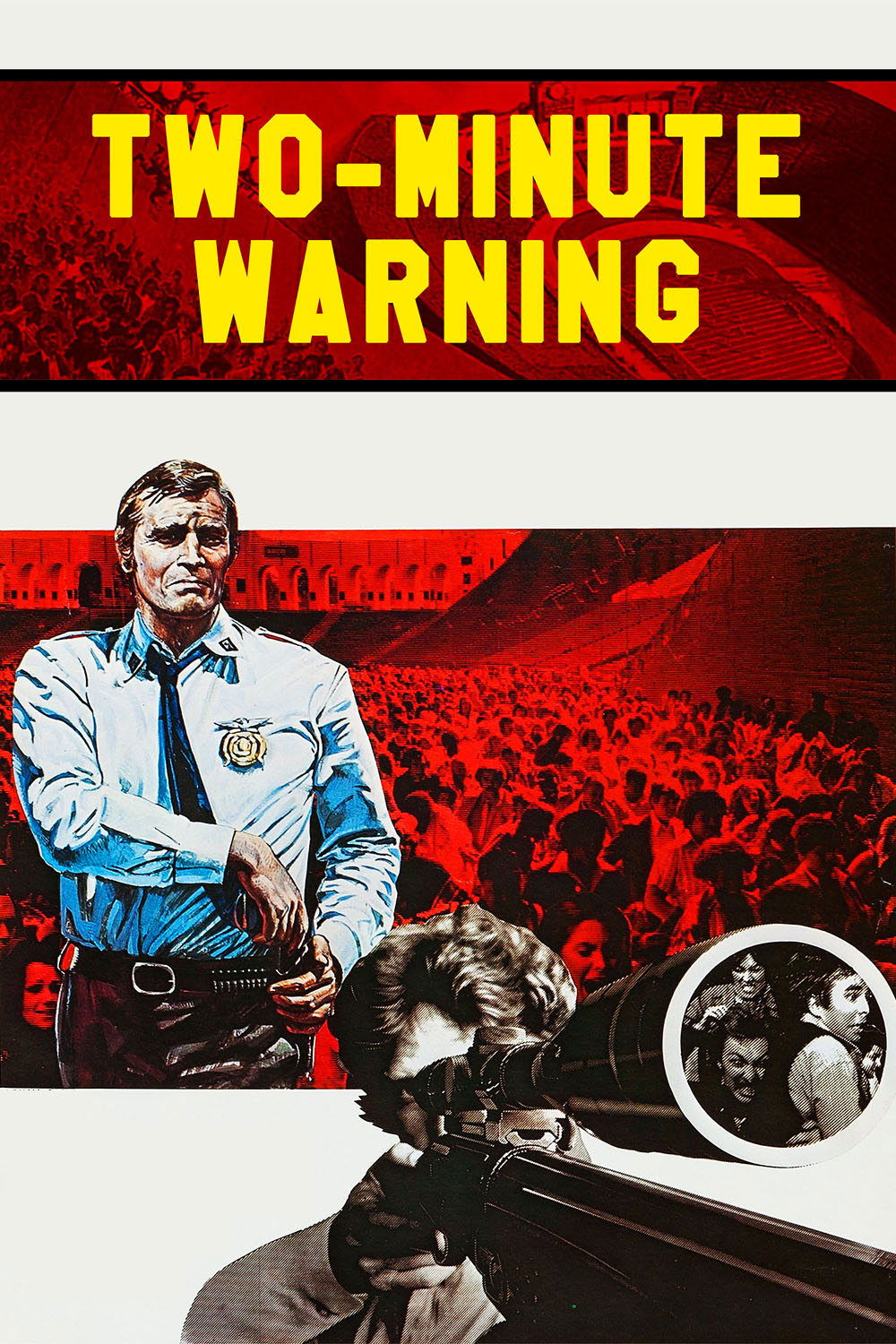 Two-Minute Warning1976-11-12A psychotic sniper plans a massive killing spree in a Los Angeles football stadium during a major championship game. The police, led by Captain Peter Holly and the SWAT commander, learn of the plot and rush to the scene.More...
Two-Minute Warning1976-11-12A psychotic sniper plans a massive killing spree in a Los Angeles football stadium during a major championship game. The police, led by Captain Peter Holly and the SWAT commander, learn of the plot and rush to the scene.More...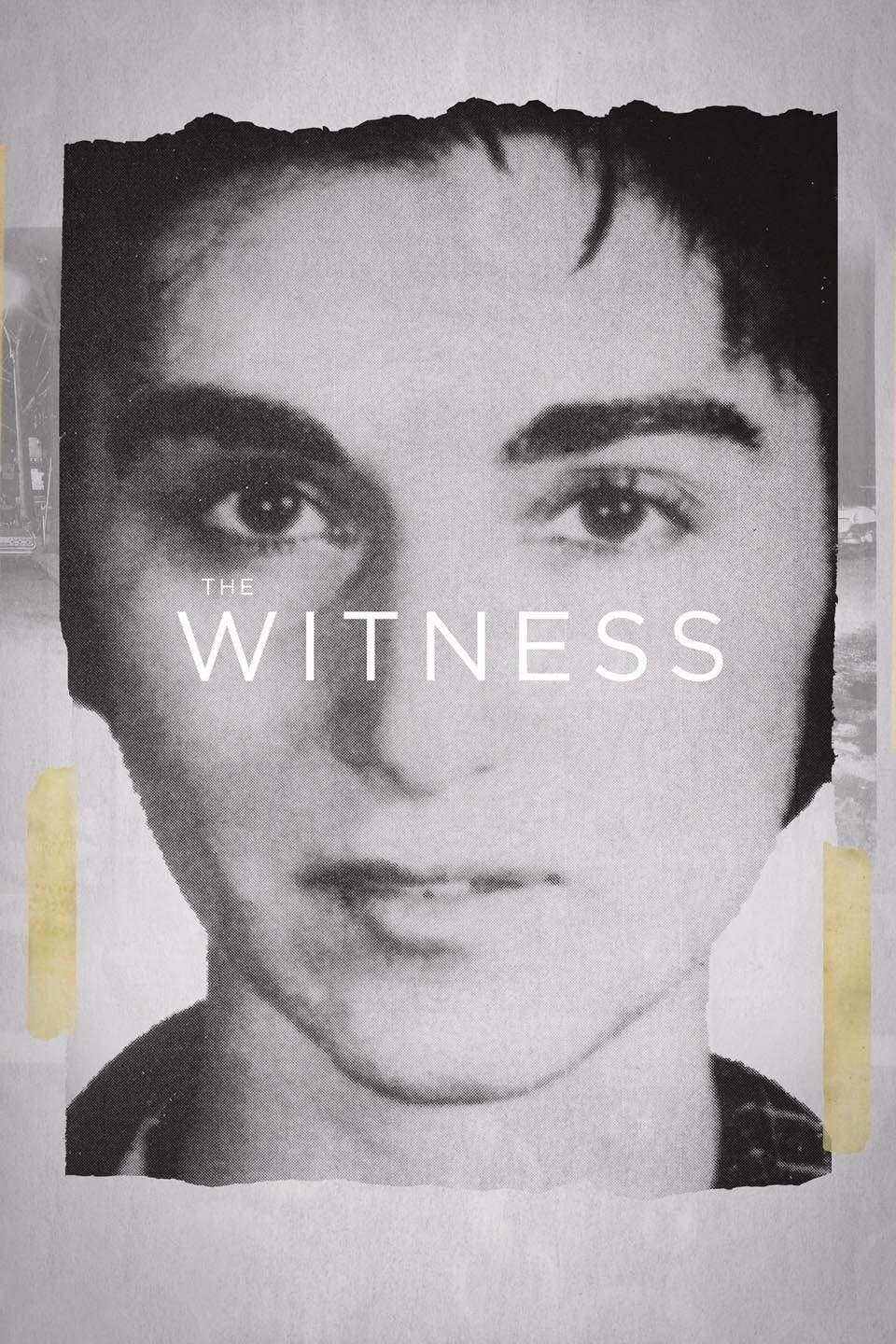 The Witness2015-10-06A brother's journey to unravel the truth about the mythic death and little known life of Kitty Genovese, who was reportedly murdered in front of 38 witnesses and has become the face of urban apathy.More...
The Witness2015-10-06A brother's journey to unravel the truth about the mythic death and little known life of Kitty Genovese, who was reportedly murdered in front of 38 witnesses and has become the face of urban apathy.More...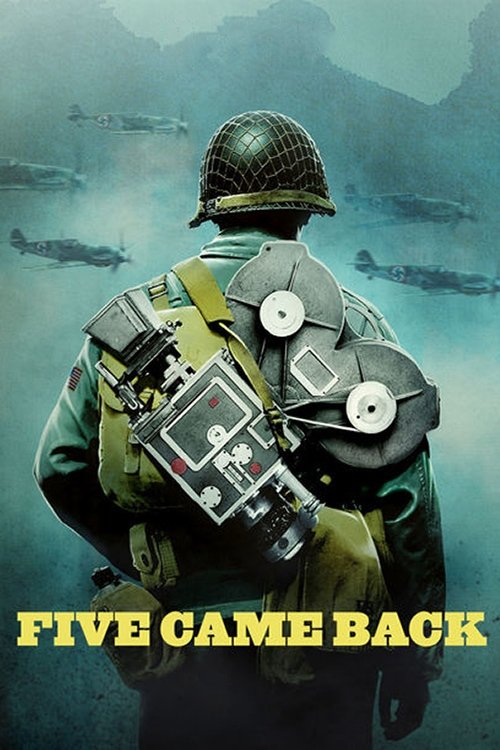 Five Came Back2017-03-31The extraordinary story of how Hollywood changed World War II – and how World War II changed Hollywood, through the interwoven experiences of five legendary filmmakers who went to war to serve their country and bring the truth to the American people: John Ford, William Wyler, John Huston, Frank Capra, and George Stevens. Based on Mark Harris’ best-selling book, “Five Came Back: A Story of Hollywood and the Second World War.”More...
Five Came Back2017-03-31The extraordinary story of how Hollywood changed World War II – and how World War II changed Hollywood, through the interwoven experiences of five legendary filmmakers who went to war to serve their country and bring the truth to the American people: John Ford, William Wyler, John Huston, Frank Capra, and George Stevens. Based on Mark Harris’ best-selling book, “Five Came Back: A Story of Hollywood and the Second World War.”More...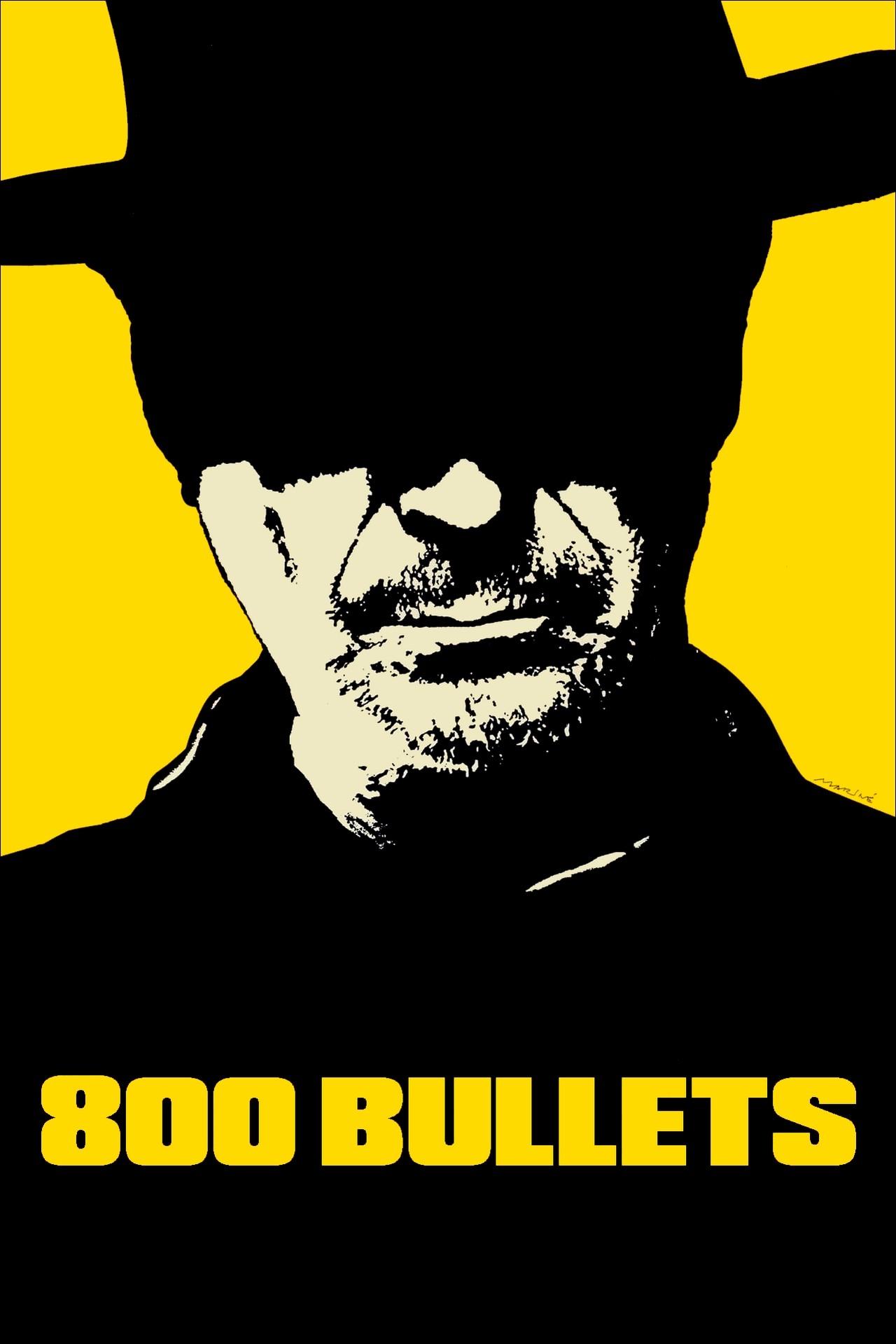 800 Bullets2002-10-18Almería, Tabernas desert, Spain, 2002. Texas Hollywood is a dilapidated and dusty town where Western movies have not been shot for decades. Julián Torralba and his partners, veteran film stuntmen, survive there, recreating pathetic action scenes for the pleasure of the few foreign tourists who visit the isolated region.More...
800 Bullets2002-10-18Almería, Tabernas desert, Spain, 2002. Texas Hollywood is a dilapidated and dusty town where Western movies have not been shot for decades. Julián Torralba and his partners, veteran film stuntmen, survive there, recreating pathetic action scenes for the pleasure of the few foreign tourists who visit the isolated region.More... Some Kind of Heaven2021-02-19Behind the gates of a palm-tree-lined fantasyland, three residents and one interloper at America’s largest retirement community strive to find happiness.More...
Some Kind of Heaven2021-02-19Behind the gates of a palm-tree-lined fantasyland, three residents and one interloper at America’s largest retirement community strive to find happiness.More... S Is for Stanley2016-05-30The incredible story of the Italian Emilio D'Alessandro, personal driver of the great director Stanley Kubrick (1928-1999), who met Emilio by chance in London in 1971 and hired him, thus establishing a deep friendship that lasted thirty years and helped create four masterpieces of cinema. A moving tale about two seemingly opposing people who found their ideal travel companion far away from home…More...
S Is for Stanley2016-05-30The incredible story of the Italian Emilio D'Alessandro, personal driver of the great director Stanley Kubrick (1928-1999), who met Emilio by chance in London in 1971 and hired him, thus establishing a deep friendship that lasted thirty years and helped create four masterpieces of cinema. A moving tale about two seemingly opposing people who found their ideal travel companion far away from home…More... Symbol2009-09-12A Japanese man in polka-dot pajamas wakes up in a room with no doors. Meanwhile, a middle-aged Mexican wrestler prepares for his most challenging match ever.More...
Symbol2009-09-12A Japanese man in polka-dot pajamas wakes up in a room with no doors. Meanwhile, a middle-aged Mexican wrestler prepares for his most challenging match ever.More...
Similar Movies
Forbidden Knowledge: ...
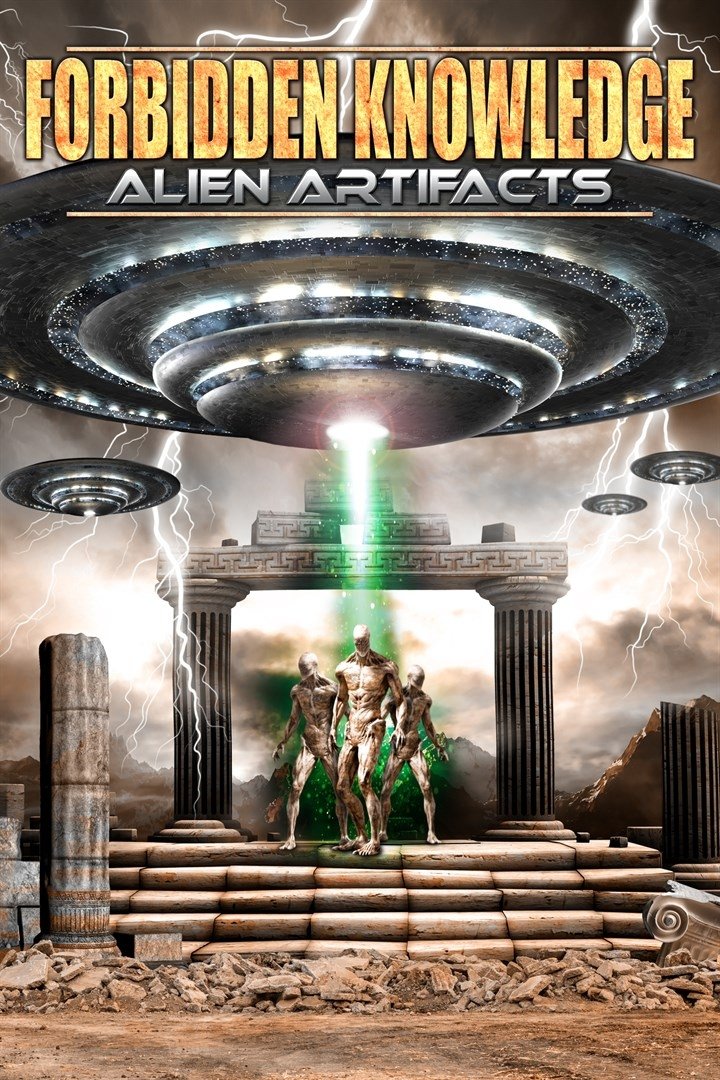 2022-06-08Shocking new evidence of highly advanced civilizations mounts as previously unexplored regions of the earth reveal mind boggling artifacts that defy all convention and utterly mystify today's academic and scientific factions. It's clear there are massive gaps between our current understanding of the cosmos and the origins of humanity and that of ancient civilizations that existed before "recorded history". Experience unprecedented relics and artifacts that force us to re-evaluate the mainstream dogma of who we are and where we came from.
2022-06-08Shocking new evidence of highly advanced civilizations mounts as previously unexplored regions of the earth reveal mind boggling artifacts that defy all convention and utterly mystify today's academic and scientific factions. It's clear there are massive gaps between our current understanding of the cosmos and the origins of humanity and that of ancient civilizations that existed before "recorded history". Experience unprecedented relics and artifacts that force us to re-evaluate the mainstream dogma of who we are and where we came from.Room 999
 2023-10-05In 1982, Wim Wenders asked 16 of his fellow directors to speak on the future of cinema, resulting in the film Room 666. Now, 40 years later, in Cannes, director Lubna Playoust asks Wim Wenders himself and a new generation of filmmakers (James Gray, Rebecca Zlotowski, Claire Denis, Olivier Assayas, Nadav Lapid, Asghar Farhadi, Alice Rohrwacher and more) the same question: “is cinema a language about to get lost, an art about to die?”
2023-10-05In 1982, Wim Wenders asked 16 of his fellow directors to speak on the future of cinema, resulting in the film Room 666. Now, 40 years later, in Cannes, director Lubna Playoust asks Wim Wenders himself and a new generation of filmmakers (James Gray, Rebecca Zlotowski, Claire Denis, Olivier Assayas, Nadav Lapid, Asghar Farhadi, Alice Rohrwacher and more) the same question: “is cinema a language about to get lost, an art about to die?”Hellborn
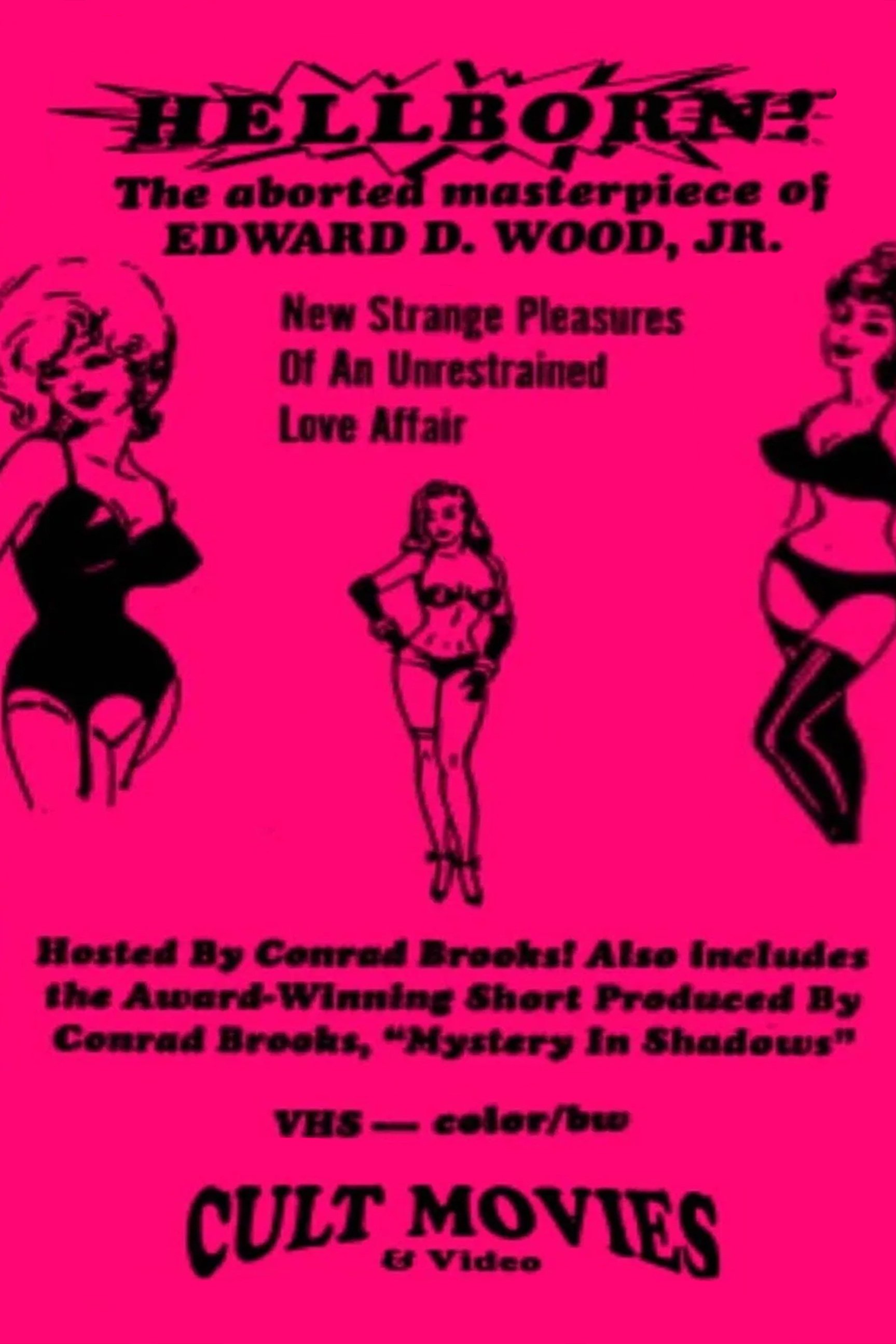 1993-01-01Conrad Brooks discusses "Hellborn," his unfinished movie with Ed Wood, and other projects
1993-01-01Conrad Brooks discusses "Hellborn," his unfinished movie with Ed Wood, and other projectsJean-Marie Straub and...
 1983-11-13This film is at once a self-portrait and an homage to Jean-Marie Straub, Farocki's role model and former teacher at the Film Academy.
1983-11-13This film is at once a self-portrait and an homage to Jean-Marie Straub, Farocki's role model and former teacher at the Film Academy.The Mysterious Monste...
 1976-07-01One of the many notorious 70's "unknown" documentaries, The Mysterious Monsters covers topics such as Bigfoot and the Loch Ness Monster. Pictures, sounds, and videos of these two monsters are examined by Peter Graves, the host. Psychics, hypnotism, and the history of Bigfoot in many ancient cultures is also scrutinized.
1976-07-01One of the many notorious 70's "unknown" documentaries, The Mysterious Monsters covers topics such as Bigfoot and the Loch Ness Monster. Pictures, sounds, and videos of these two monsters are examined by Peter Graves, the host. Psychics, hypnotism, and the history of Bigfoot in many ancient cultures is also scrutinized.Fake Blood
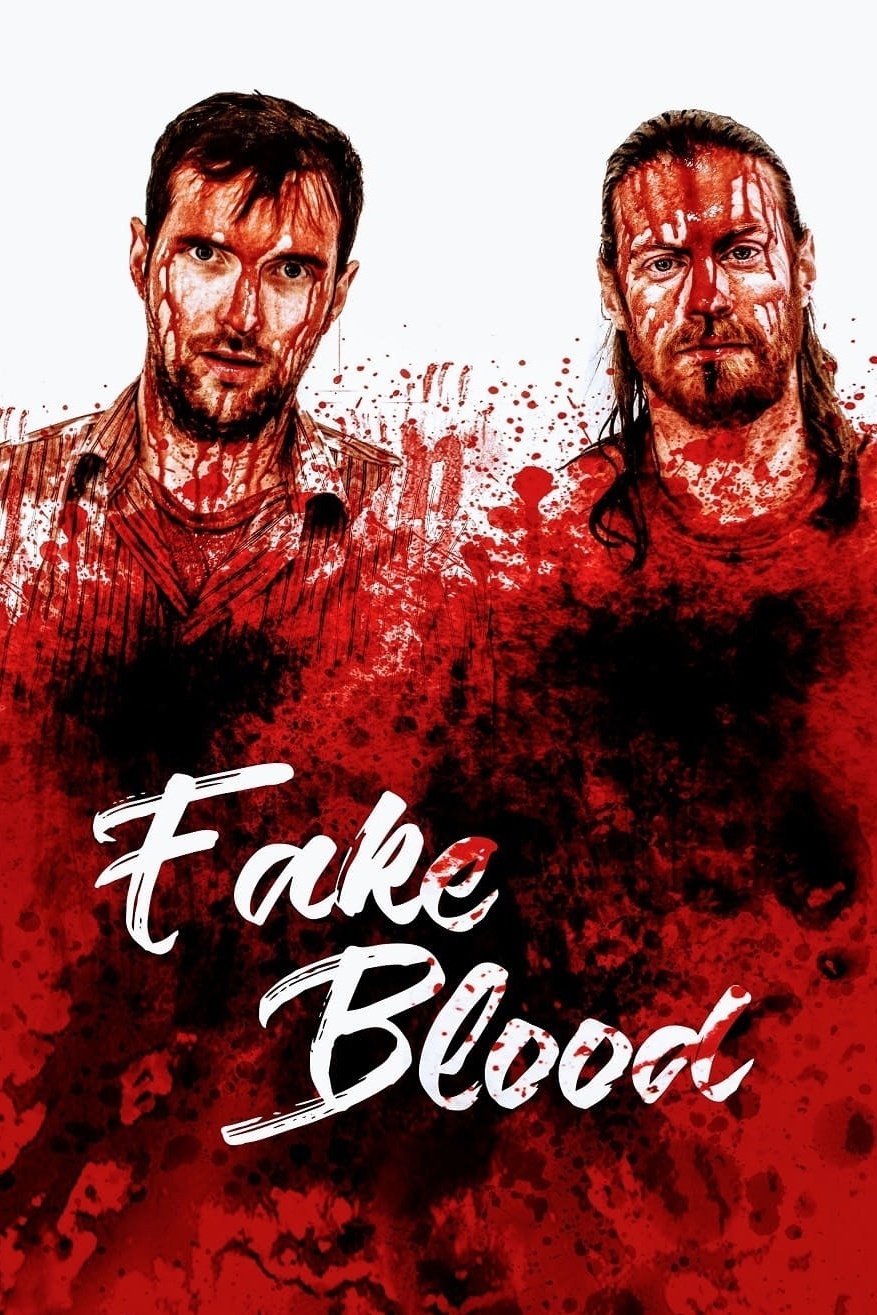 2017-10-06Rob Grant and Mike Kovac receive a disturbing fan video inspired by their previous horror movie Mon Ami, motivating them to investigate the responsibility of filmmakers in portraying violence in movies. In their pursuit of the truth they are unwittingly introduced to the real world of violent criminals and their victims.
2017-10-06Rob Grant and Mike Kovac receive a disturbing fan video inspired by their previous horror movie Mon Ami, motivating them to investigate the responsibility of filmmakers in portraying violence in movies. In their pursuit of the truth they are unwittingly introduced to the real world of violent criminals and their victims.The Big Chill: A Reun...
 1999-01-26A look back at the making of the film "The Big Chill" (1983) with cast and crew.
1999-01-26A look back at the making of the film "The Big Chill" (1983) with cast and crew.Nollywood Babylon
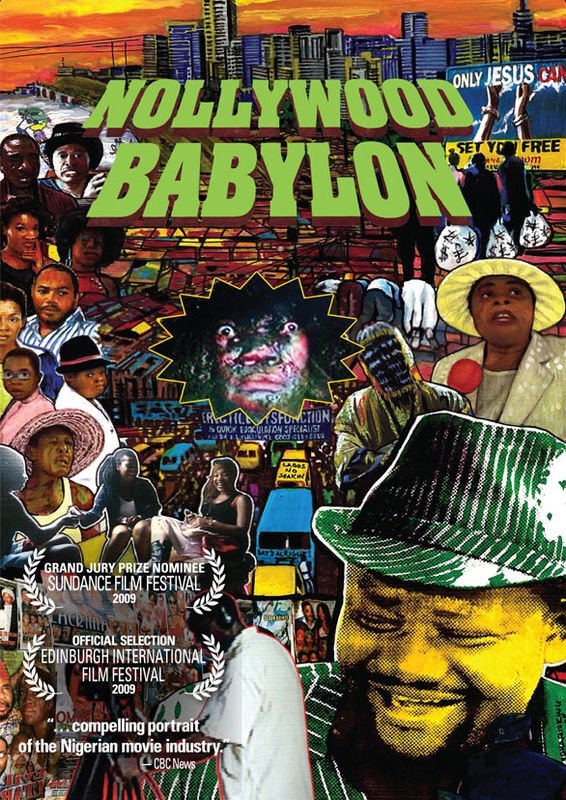 2009-07-03Nigeria's film industry, Nollywood, is the third-largest in the world--an unstoppable economic and cultural force that has taken the continent by storm and is now bursting beyond the borders of Africa. "Nollywood Babylon" is a feature documentary detailing the industry's phenomenal success. Propelled by a booming 1970s soundtrack of African underground music, the movie presents an electric vision of a modern African metropolis and a revealing look at the powerhouse that is Nigerian cinema.
2009-07-03Nigeria's film industry, Nollywood, is the third-largest in the world--an unstoppable economic and cultural force that has taken the continent by storm and is now bursting beyond the borders of Africa. "Nollywood Babylon" is a feature documentary detailing the industry's phenomenal success. Propelled by a booming 1970s soundtrack of African underground music, the movie presents an electric vision of a modern African metropolis and a revealing look at the powerhouse that is Nigerian cinema.In the Shadow of Holl...
 2007-09-15This documentary captures the sounds and images of a nearly forgotten era in film history when African American filmmakers and studios created “race movies” exclusively for black audiences. The best of these films attempted to counter the demeaning stereotypes of black Americans prevalent in the popular culture of the day. About 500 films were produced, yet only about 100 still exist. Filmmaking pioneers like Oscar Micheaux, the Noble brothers, and Spencer Williams, Jr. left a lasting influence on black filmmakers, and inspired generations of audiences who finally saw their own lives reflected on the silver screen.
2007-09-15This documentary captures the sounds and images of a nearly forgotten era in film history when African American filmmakers and studios created “race movies” exclusively for black audiences. The best of these films attempted to counter the demeaning stereotypes of black Americans prevalent in the popular culture of the day. About 500 films were produced, yet only about 100 still exist. Filmmaking pioneers like Oscar Micheaux, the Noble brothers, and Spencer Williams, Jr. left a lasting influence on black filmmakers, and inspired generations of audiences who finally saw their own lives reflected on the silver screen.John Ford Goes to War...
 2002-01-01When World War II broke out, John Ford, in his forties, commissioned in the Naval Reserve, was put in charge of the Field Photographic Unit by Bill Donavan, director of the soon-to-be-OSS. During the war, Field Photo made at least 87 documentaries, many with Ford's signature attention to heroism and loss, and many from the point of view of the fighting soldier and sailor. Talking heads discuss Ford's life and personality, the ways that the war gave him fulfillment, and the ways that his war films embodied the same values and conflicts that his Hollywood films did. Among the films profiled are "Battle of Midway," "Torpedo Squadron," "Sexual Hygiene," and "December 7."
2002-01-01When World War II broke out, John Ford, in his forties, commissioned in the Naval Reserve, was put in charge of the Field Photographic Unit by Bill Donavan, director of the soon-to-be-OSS. During the war, Field Photo made at least 87 documentaries, many with Ford's signature attention to heroism and loss, and many from the point of view of the fighting soldier and sailor. Talking heads discuss Ford's life and personality, the ways that the war gave him fulfillment, and the ways that his war films embodied the same values and conflicts that his Hollywood films did. Among the films profiled are "Battle of Midway," "Torpedo Squadron," "Sexual Hygiene," and "December 7."The Making of Indiana...
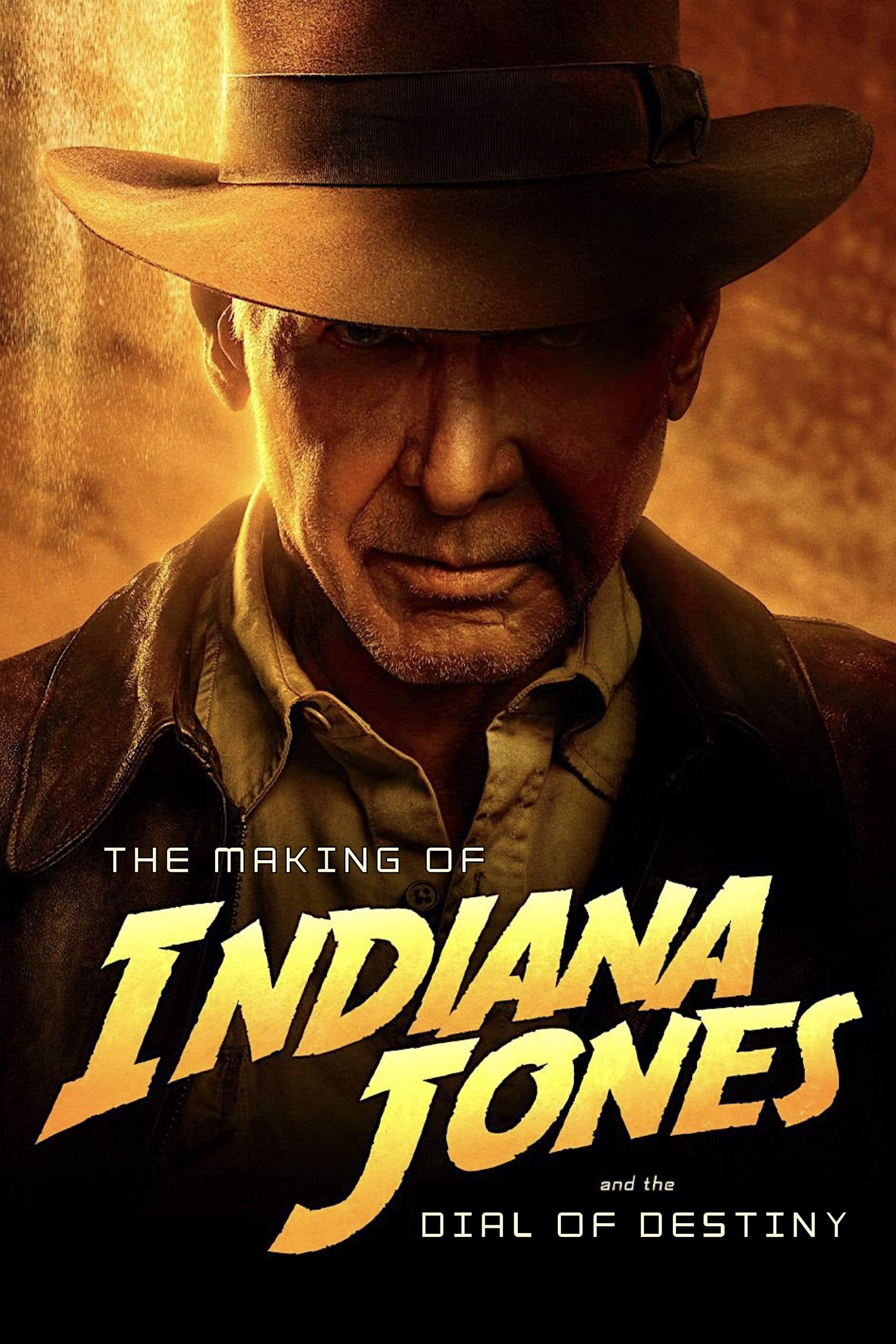 2023-08-29Join the adventure with the cast and crew, showcasing new characters, stunts, music, locations, production design, and visual effects in five chapters that chart the making of Indiana Jones and the Dial of Destiny.
2023-08-29Join the adventure with the cast and crew, showcasing new characters, stunts, music, locations, production design, and visual effects in five chapters that chart the making of Indiana Jones and the Dial of Destiny.Begins (โผบิน)
 2024-09-01The untold state of mind dealing with an incurable disease. One is wondering if there's still a dream to achieve in life. One is running as if this free spirit of mine has never been taken away.
2024-09-01The untold state of mind dealing with an incurable disease. One is wondering if there's still a dream to achieve in life. One is running as if this free spirit of mine has never been taken away.Christopher Reeve, Su...
 2024-09-28A French documentary on Superman actor Christopher Reeve as told by his French voice dubbing actor, Pierre Arditi.
2024-09-28A French documentary on Superman actor Christopher Reeve as told by his French voice dubbing actor, Pierre Arditi.Good Chemistry: The S...
 2023-09-13Pixar director Peter Sohn takes viewers on a humorous personal journey through the inspiration behind Disney and Pixar’s feature film “Elemental.” “Good Chemistry: The Story of Elemental” traces his parents’ voyage from Korea to New York, explores his dad’s former grocery shop in the heart of the Bronx, and delves into his choice of a career in animation, rather than the family business.
2023-09-13Pixar director Peter Sohn takes viewers on a humorous personal journey through the inspiration behind Disney and Pixar’s feature film “Elemental.” “Good Chemistry: The Story of Elemental” traces his parents’ voyage from Korea to New York, explores his dad’s former grocery shop in the heart of the Bronx, and delves into his choice of a career in animation, rather than the family business.Making Apes: The Arti...
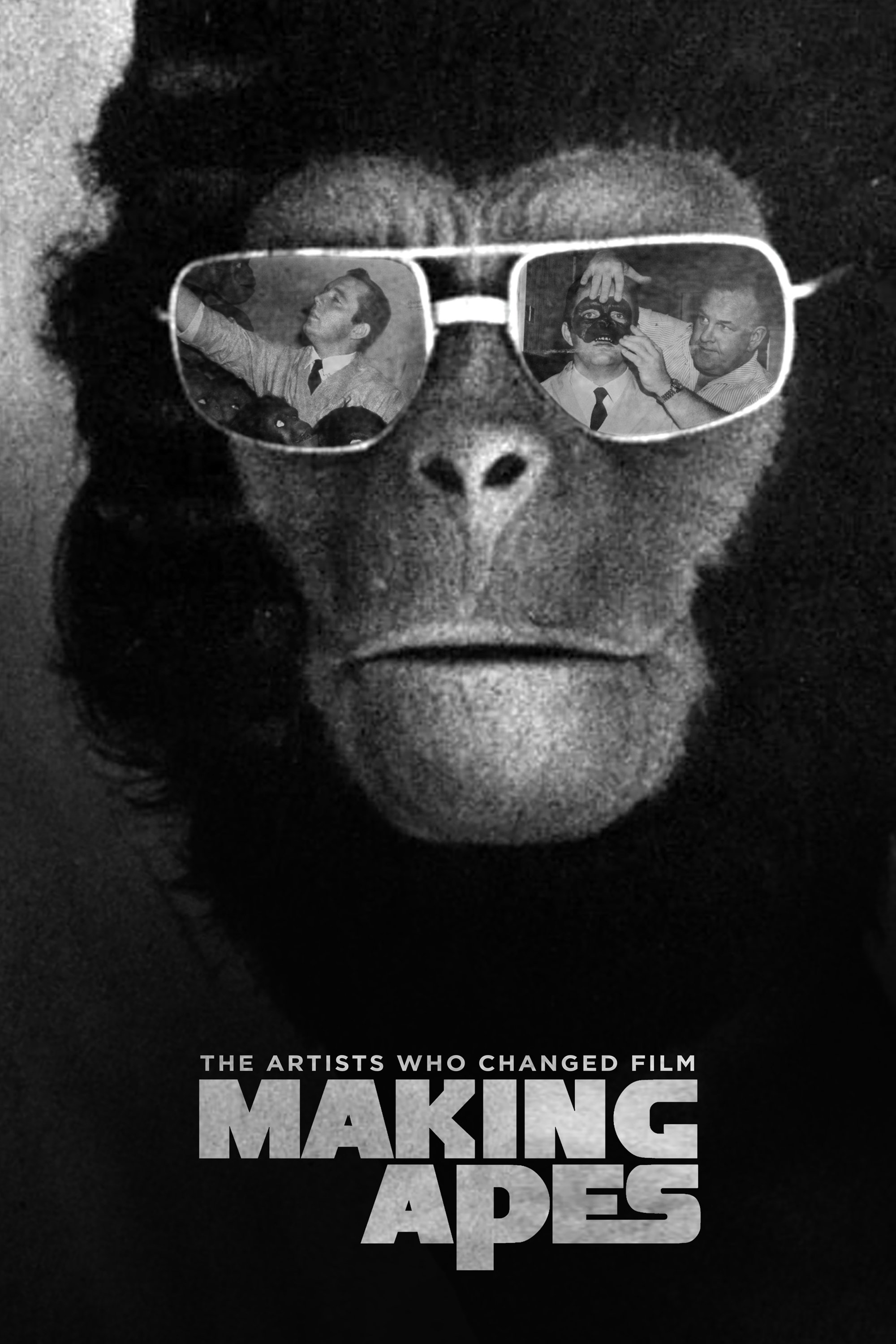 2019-01-30Fifty years after its release, the special effects makeup team behind Planet of the Apes reflect on making the iconic film.
2019-01-30Fifty years after its release, the special effects makeup team behind Planet of the Apes reflect on making the iconic film.Drama, Tanz und Beine...
2007-01-07There is no descriptionAltman
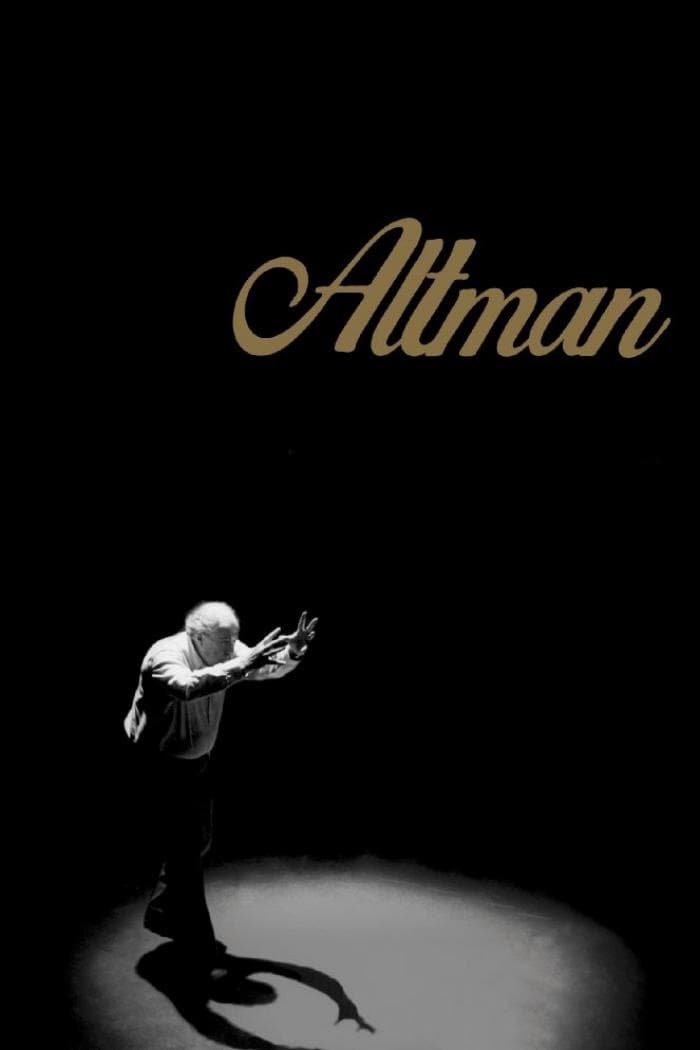 2014-08-01Robert Altman's life and career contained multitudes. This father of American independent cinema left an indelible mark, not merely on the evolution of his art form, but also on the western zeitgeist. With its use of rare interviews, representative film clips, archival images, and musings from his family and most recognizable collaborators, Altman is a dynamic and heartfelt mediation on an artist whose expression, passion and appetite knew few bounds.
2014-08-01Robert Altman's life and career contained multitudes. This father of American independent cinema left an indelible mark, not merely on the evolution of his art form, but also on the western zeitgeist. With its use of rare interviews, representative film clips, archival images, and musings from his family and most recognizable collaborators, Altman is a dynamic and heartfelt mediation on an artist whose expression, passion and appetite knew few bounds.Look, Up in the Sky! ...
 2006-06-12The history of the comic book superhero, Superman, in his various media incarnations.
2006-06-12The history of the comic book superhero, Superman, in his various media incarnations.Fall of the Republic:...
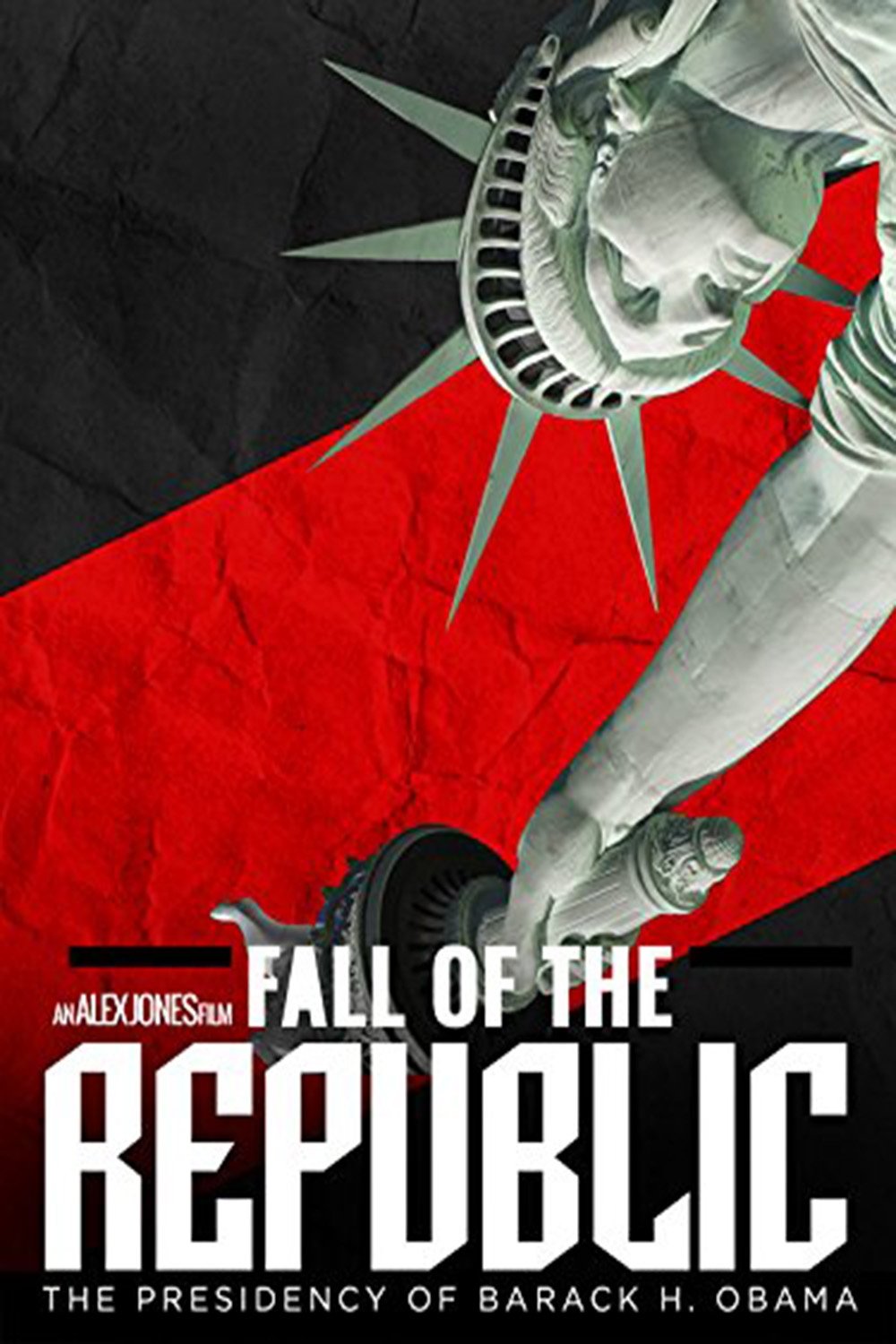 2009-10-21Fall Of The Republic documents how an offshore corporate cartel is bankrupting the US economy by design. Leaders are now declaring that world government has arrived and that the dollar will be replaced by a new global currency.
2009-10-21Fall Of The Republic documents how an offshore corporate cartel is bankrupting the US economy by design. Leaders are now declaring that world government has arrived and that the dollar will be replaced by a new global currency.Desperate Souls, Dark...
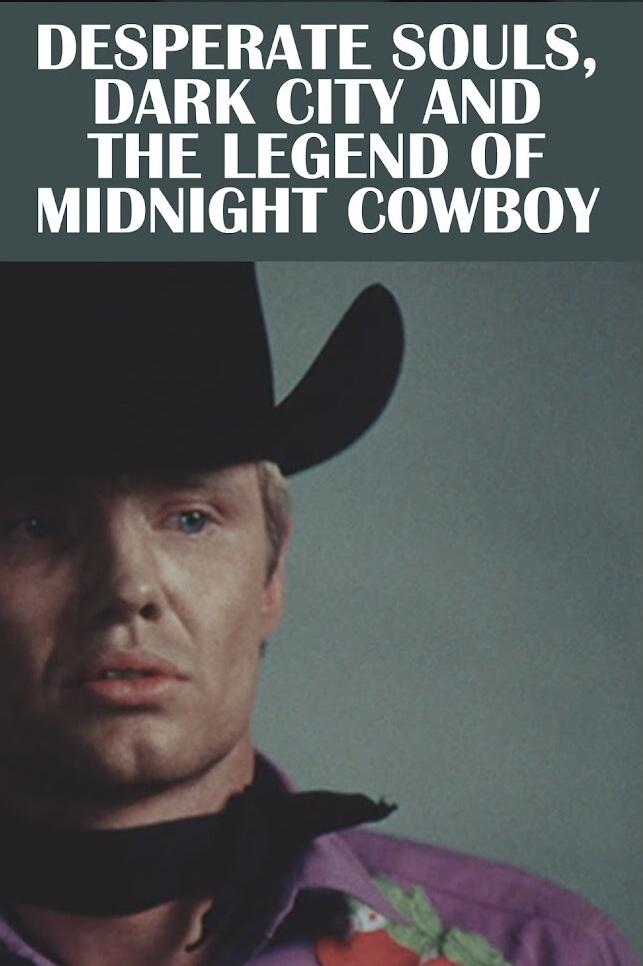 2023-06-23This is not a documentary about the making of Midnight Cowboy. It is about a humane and groundbreaking masterpiece and the flawed but gifted people who made it. It is about a troubled era of cultural ferment, social and political change, about broken dreams and strivers, then and now. It is about an era that made a movie and a movie that made an era.
2023-06-23This is not a documentary about the making of Midnight Cowboy. It is about a humane and groundbreaking masterpiece and the flawed but gifted people who made it. It is about a troubled era of cultural ferment, social and political change, about broken dreams and strivers, then and now. It is about an era that made a movie and a movie that made an era.
